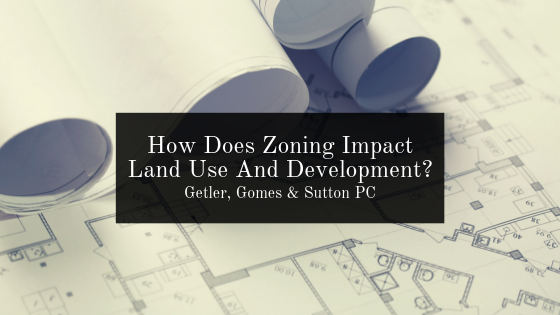It would be convenient if you could do whatever you wanted to with your land. Unfortunately, that is not the case. Land use and zoning laws place limitations on how the land can be developed and what can be built upon it. There are also non-governmental restrictions on land development, such as easements and restrictive covenants.
Zoning laws originated from New York City in 1916. Since that time, almost every town or city has some form of zoning laws on their books. Zoning laws divide a municipality into residential, commercial, and industrial zones. Buildings within residential zones must generally be residential buildings and buildings within a commercial zoning zone must generally be commercial buildings, etc.
The zone essentially determines what kind of building can be constructed in that location. Depending on the zoning laws in place, there may also be additional specifications. The specifications can include things such as how high or wide a building can be, the number of rooms a building can have and the location of utilities such as water and sewage lines. Zoning in a historic area can also force developers to have to preserve the historic nature of buildings. It may also limit housing to single-family homes or multi-family housing only in a certain zone.
A recent trend in zoning and land use development is the adoption of master and regional plans. A master plan is a plan for an entire neighborhood or section of a city. Developers planning to build within the master plan zone must conform to the master plan’s specifications and goals. This means that the builder must essentially meet the requirements of the plan, although he is given leeway on how he plans to do it.
A regional plan is like a master plan on a regional scale. It can involve multiple cities and towns. Regional plans were created because development in one city can impact nearby towns and cities. Such plans can help control traffic, pollution, and overcrowding.
Courts will often enforce zoning laws if they are reasonable and promote the general health, safety, and welfare of the community. Appeals against zoning laws can be done, but it is often complicated and time-consuming. Spot zoning is a process where a plot of land may be given waivers from the zoning laws that it is found due to the interests of the private landowner in the zone. These cases are handled by boards of zoning appeals.
The owners of land in development can also limit land use through what is known as a restrictive covenant. This restricts development through provisions in the land deeds. It is often used to create things such as minimum house and plot sizes. An easement is when someone can use someone else’s land for a specified purpose. This is commonly done to preserve land for parks by preventing development on the easement. Utility lines are also usually located on property easements.
